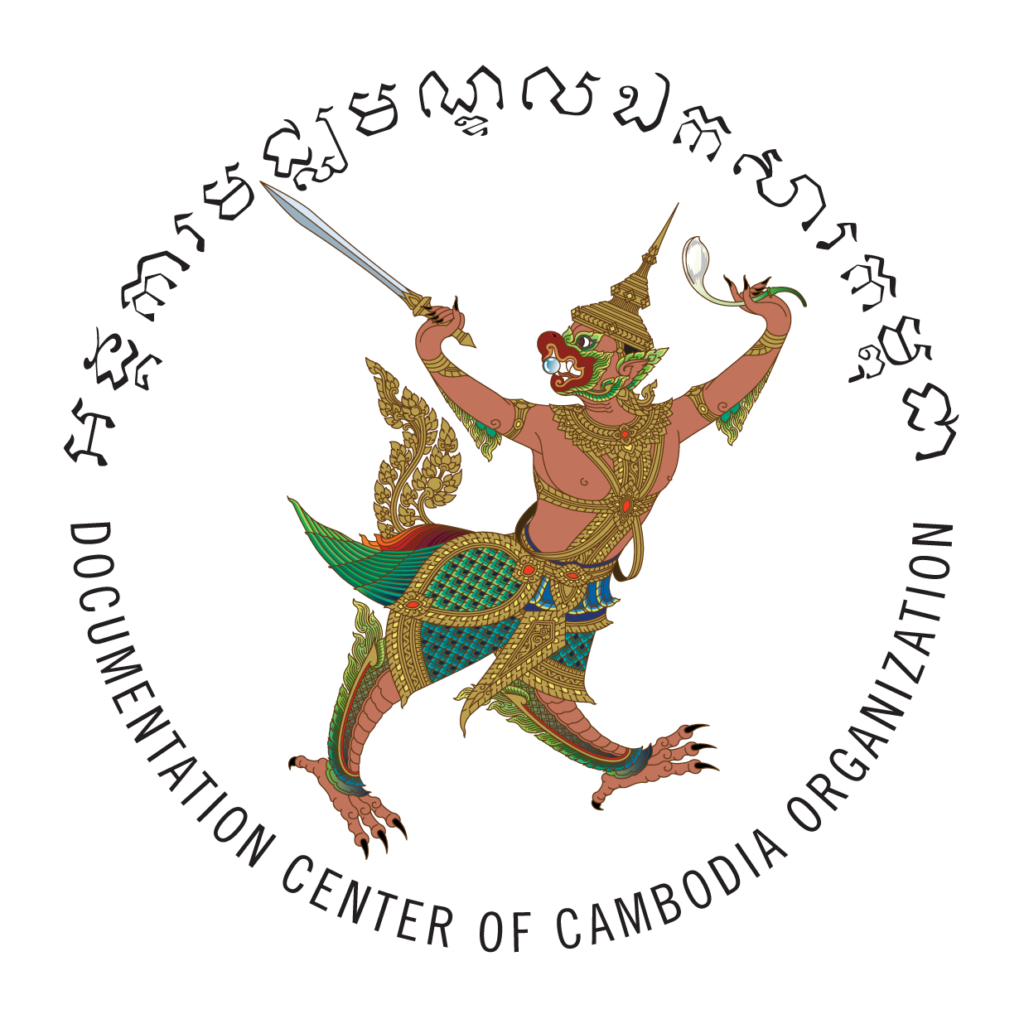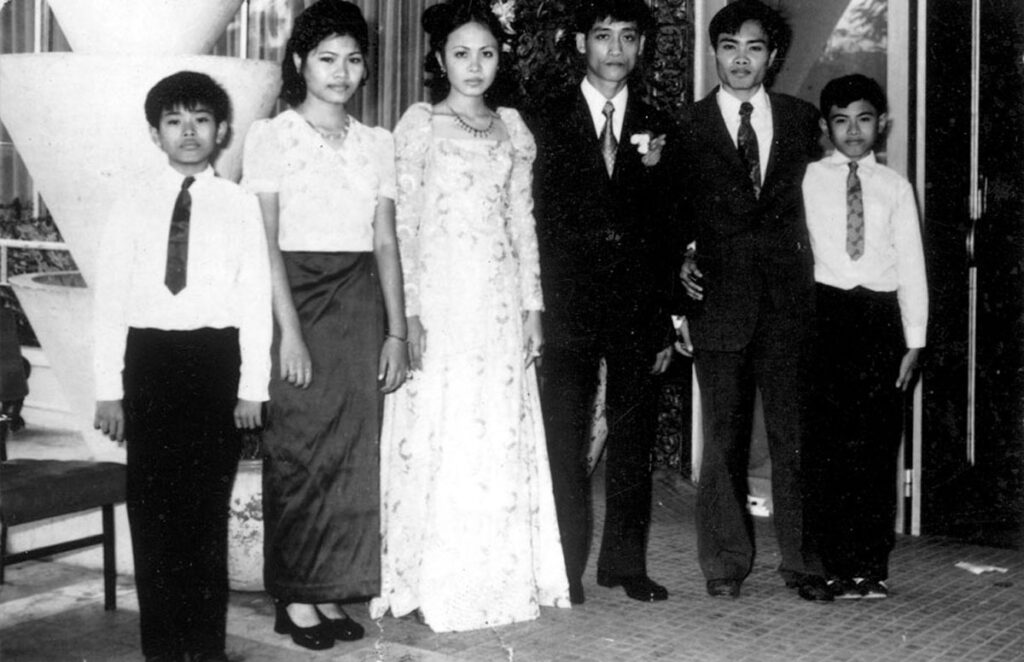I still remember my father’s words: “I am a soldier, and will not flee the country. If I die, I want to die in Cambodia.” He said this on April 15, 1975 when my mother told him to escape. He probably knew he would be killed, but decided to stay in Phnom Penh anyway.
Before he joined the army, my father worked as a teacher in Kampong Cham Province. He was a vicious person. Once when one of his students didn’t know his lesson, my father beat him. The student said, “It is OK, when I become a solider, I will take revenge on you.”
My father never hesitated in battle or lost his courage. On March 18, 1970 my family was about to leave on holiday when we heard the news about the coup d’état against King Sihanouk. My father was called into battle that day and was later promoted to the rank of major. Lon Nol also gave him a flag of honor.
He fought the Khmer Rouge, but it was very difficult to defeat them. In the battle of Pech Nil, both sides kept fighting, but no one was winning or losing. My father carried a rifle; he could never get used to carrying hand guns. Suddenly, a Khmer Rouge soldier shot his rifle, causing it to explode. All of my father’s clothes caught fire, but he escaped serious injury. His subordinates carried him to a car and then retreated. Soon after, the newspaper published his picture. My father posed with his torn underwear for the photographer, and then brought home his burnt clothes as a souvenir.
In the evening of April 16, 1975 my father told my mother not to worry any longer because the war had ended, and that Ieng Sary [deputy prime minister of Democratic Kampuchea] had been his friend and colleague when he was working as a teacher. My mother told him that she heard a radio broadcast from abroad saying that my father’s name was on a list of generals to be killed. She told him to flee, but he refused.
Khmer Rouge soldiers were everywhere in the city the next morning. The Lon Nol soldiers took off their uniforms and began wearing their civilian clothes instead. My father had a driver take our family to the Ministry of Information because he thought no one would harm us there. At noon, a man came up to greet my mother, calling her “Your Excellency.” Mother told me he was Koy Thuon [Minister of Commerce during Democratic Kampuchea] and was my father’s former student. Koy Thuon told my father to go to the French Embassy because no one would dare to make us leave the city if we stayed there.
A little later, I saw a high-ranking Lon Nol soldier in a white uniform drive up in a car. My father walked up to him, took off his uniform, and put it in the car. Then up came Ieng Sary, who was shaking the hands of many people.
My father told my mother to take us children and hide in the French Embassy. He then left with the Khmer Rouge officials. At 4 in the afternoon, Khmer Rouge soldiers entered the embassy, pointed guns at us, and forced us to go home. Mother said, “Stop thinking about Dad because he has probably already died.” She then destroyed all of his uniforms and documents.
We were evacuated on April 18 to Sa-ang District, where many of our relatives were Khmer Rouge cadres. My mother said we should leave because our lives would soon be in great danger. Eventually, we traveled to Pursat Province. Each time the Angkar questioned my mother about her home town, she lied. After six months, we finally found an area where we thought no one knew us. However, we met Lieutenant General Hang Bun Heng’s wife there. We had no where else to go.
A few days later, the Angkar took my older brother Sai Na Tit away. He had been a school director in Phnom Penh. Because he did not shave his beard during the Khmer Rouge regime, he looked alike an actor called Pech Sa Loeun. The Angkar killed him because they thought he was Pech Sa Loeun, who had also been a captain in the Lon Nol regime.
We lived with base people; they could cook rice at night and hardly had any problems. But the new people would be killed if they so much as stole a few potatoes. My older sister Saly once gave me net and I caught some fish with it. A local boy said that the net and fish belonged to him. He took out a piece of rattan and lashed me until my eyes were blackened.
One day, I was very sick and fainted in the rice field. When I woke up, my unit chief sent me to the battlefield. When I was brought back to the village, I did not see my mother. The villagers told me she was sick, but in fact, she, my brother, two nieces and a nephew had disappeared.
Saly was sent to Pursat in 1978, where she worked in a widow’s unit. Some villagers who were there with her told me that before she died, the cadres asked her if she preferred living with the Angkar or with her father. I don’t know her reply, but was told that she gave all her gold plates to the cadres in order to survive; they killed her anyway. Her husband Mi Peng Kea was a jet fighter pilot; my father had sent him to study in Thailand before 1975; he is now living in America.
After the Angkar took Saly away, they began asking my sister Hoh Si Len the same questions. She told them that she had been educated for five years with the Angkar, so she would devote herself living with the Angkar. She survived and is living in France.
I grew up during the Khmer Rouge regime and was unable to go to school. If I learned one thing from the regime, it is that I must have an education and work hard.

